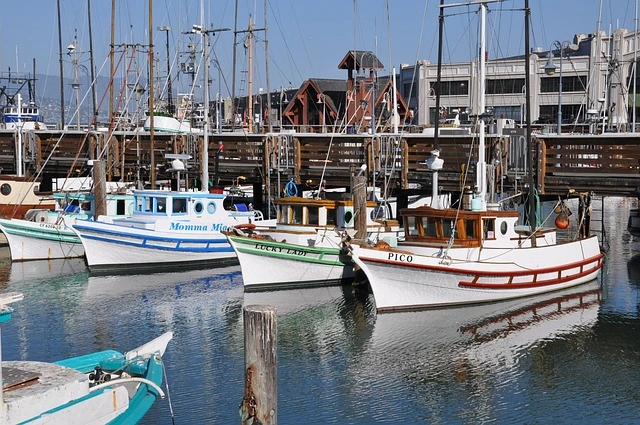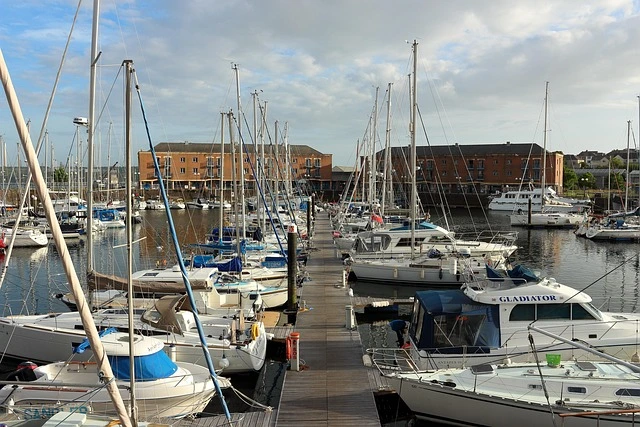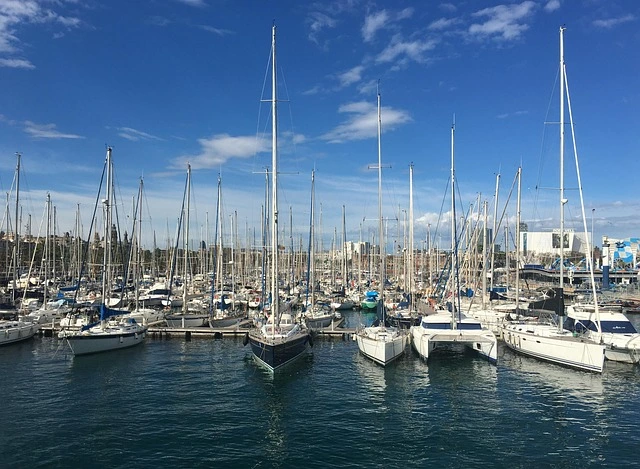Investing in marinas has garnered significant attention in recent years, with investors recognizing the unique opportunities these assets present. The U.S. marina industry reported robust revenue of $6.7 billion in 2023, marking a 1.1% increase from the previous year. This growth underscores the sector's resilience and potential for profitability. However, successful marina investment requires a nuanced understanding of the diverse revenue streams, market dynamics, and strategic management practices that drive success.

Chapter 1: Understanding the Profit Potential of Marina Investments
1.1 Diverse Revenue Streams in Marina Operations
Marinas offer multiple income avenues that contribute to their profitability:
-
Slip Rentals and Storage Fees: Leasing dock space to boat owners provides a steady income, with rates varying based on location, amenities, and vessel size.
-
Maintenance and Repair Services: Offering on-site repair and maintenance services caters to boaters' needs and adds a significant revenue stream.
-
Retail and Hospitality Services: On-site restaurants, shops, and lodging facilities enhance the marina's appeal and generate additional income.
1.2 Market Demand and Trends in the Marina Industry
The marina industry is influenced by several key trends:
-
Growing Recreational Boating: An increasing number of individuals are engaging in boating activities, driving demand for marina services.
-
Tourism Impact: Marinas located in popular tourist destinations benefit from transient boaters and seasonal visitors, boosting occupancy rates.
1.3 Real Estate Appreciation and Scarcity
Investing in marina properties also offers real estate advantages:
-
Waterfront Property Value: Waterfront locations are inherently valuable, and marinas in prime areas often experience property appreciation.
-
Limited Supply: The scarcity of available waterfront property can lead to increased competition and higher valuations for existing marinas.
Effective management of these property assets is crucial. Using comprehensive marina management tools, such as DockMaster's software, can streamline operations, enhance customer service, and optimize revenue streams.
Chapter 2: Key Considerations Before Investing in Marinas

2.1 Location Analysis and Site Selection
Choosing the right location is paramount:
-
Proximity to Boating Areas: Marinas near popular boating destinations or waterways attract more patrons.
-
Accessibility: Easy access via roads and proximity to urban centers can increase customer convenience and traffic.
2.2 Regulatory and Environmental Factors
Navigating legal and environmental considerations is essential:
-
Zoning Laws: Understanding local zoning regulations ensures compliance and informs development potential.
-
Environmental Impact: Assessing ecological factors and implementing sustainable practices can mitigate environmental risks and appeal to eco-conscious consumers.
2.3 Initial Capital Investment and Financing
Financial planning is critical:
-
Acquisition and Development Costs: Estimating expenses for purchasing and upgrading facilities helps in budgeting and securing financing.
-
Financing Options: Exploring loans, investor partnerships, and other funding sources facilitates the investment process.
2.4 Operational Expertise and Management
Effective operations are key to profitability:
-
Experienced Staff: Hiring knowledgeable personnel ensures smooth day-to-day operations and quality customer service.
-
Management Systems: Implementing robust management software, like DockMaster, streamlines reservations, billing, and maintenance tracking, enhancing overall efficiency.
Chapter 3: Enhancing Profitability Through Effective Marina Management
3.1 Implementing Efficient Marina Management Software
Leveraging technology can transform marina operations:
-
Operational Streamlining: Marina management software automates tasks such as slip reservations, maintenance scheduling, and customer billing, reducing manual errors and saving time.
-
Data-Driven Decisions: Access to real-time data and analytics supports informed decision-making, helping to identify trends and optimize operations.
3.2 Optimizing Space Utilization and Services
Maximizing the use of available space and diversifying services can boost revenue:
-
Maximizing Occupancy: Implementing dynamic pricing strategies and offering seasonal promotions can increase slip occupancy rates.
-
Value-Added Services: Introducing services like boat rentals, sailing lessons, or event hosting can attract a broader clientele and enhance income.
3.3 Marketing and Customer Engagement
Effective marketing strategies are vital:
-
Targeted Campaigns: Utilizing digital marketing tools to reach specific demographics can increase visibility and attract new customers.
-
Customer Loyalty Programs: Implementing rewards programs encourages repeat business and fosters a loyal customer base.
By focusing on these areas, marina investors can enhance profitability and ensure long-term success in this dynamic industry.
Chapter 4: Risk Factors and Mitigation Strategies in Marina Investments

Investing in marinas offers lucrative opportunities, but it's essential to recognize and address associated risks to safeguard your investment.
4.1 Seasonal Variations and Revenue Fluctuations
Marina operations often experience seasonal peaks, with summer months generating higher revenues due to increased boating activity. Conversely, off-season periods may see reduced income. To mitigate this:
-
Diversify Services: Introduce year-round offerings such as boat maintenance, repair services, or hosting events to maintain steady income during off-peak seasons.
-
Flexible Staffing: Adjust staffing levels in accordance with seasonal demand to manage labor costs effectively.
4.2 Environmental Risks and Maintenance Challenges
Marinas are vulnerable to environmental factors like storms, flooding, and wear from saltwater exposure. Strategies to address these challenges include:
-
Robust Infrastructure: Invest in durable construction materials and designs that withstand harsh weather conditions.
-
Regular Maintenance: Implement a proactive maintenance schedule to address wear and tear, ensuring the longevity of facilities.
-
Comprehensive Insurance: Secure insurance coverage that addresses environmental risks specific to your marina's location.
4.3 Competitive Landscape and Market Saturation
Understanding the local market is crucial to differentiate your marina and attract clientele. Consider the following:
-
Market Analysis: Conduct thorough research to assess the number of existing marinas, their service offerings, and occupancy rates.
-
Unique Value Proposition: Develop unique amenities or services that set your marina apart, such as eco-friendly facilities or exclusive events.
-
Strategic Partnerships: Collaborate with local businesses and tourism boards to enhance visibility and attract a broader customer base.
Chapter 5: FAQs About Investing in Marinas
5.1 What is the typical return on investment for marina properties?
Returns vary based on factors like location, management efficiency, and service diversification. On average, well-managed marinas can yield favorable returns, especially when leveraging multiple revenue streams.
5.2 How can marina management software improve operational efficiency?
Comprehensive software solutions automate tasks such as slip reservations, billing, and maintenance scheduling, reducing manual errors and enhancing customer service.
5.3 What are the primary challenges faced by marina investors?
Challenges include managing seasonal revenue fluctuations, adhering to environmental regulations, and addressing maintenance needs due to environmental exposure.
5.4 How does location impact the success of a marina investment?
Proximity to popular boating areas, accessibility, and local competition significantly influence a marina's profitability and occupancy rates.
By understanding these aspects and implementing strategic management practices, investors can navigate the complexities of marina ownership and capitalize on its profit potential.
Conclusion
Investing in marinas presents a compelling opportunity for those seeking diversified revenue streams and potential property appreciation. With income sources ranging from slip rentals and maintenance services to on-site retail and hospitality, marinas can offer a steady income flow. However, success in this niche market requires careful consideration of factors such as location, regulatory compliance, environmental impact, and operational expertise.
Implementing efficient management practices is crucial to maximizing profitability. Utilizing comprehensive marina management software, like DockMaster, can streamline operations, enhance customer service, and provide valuable insights through data analytics. By addressing potential risks, such as seasonal revenue fluctuations and environmental challenges, and adopting strategic mitigation strategies, investors can position themselves for long-term success in the marina industry.
In summary, while marina investments come with their unique set of challenges, thorough due diligence, strategic planning, and effective management can unlock significant profit potential in this dynamic and rewarding sector.
